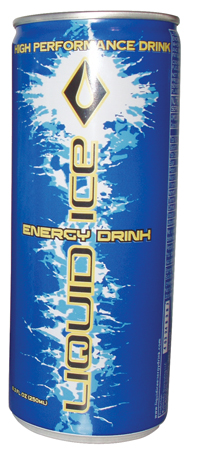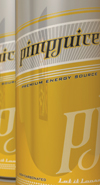
Re-energizing beverages sales
Stacy Bradshaw
Features Business and Operations MarketingEnergy drinks show potential to pump-up profits
The International Food & Beverage Show in February
was a high-energy event. Attendees were hyped-up about the newest
product innovations and the latest food trends. But it was the energy
drinks that really had them buzzing.
Energy drinks show potential to pump-up profits
 The International Food & Beverage Show in February was a high-energy event. Attendees were hyped-up about the newest product innovations and the latest food trends. But it was the energy drinks that really had them buzzing.
The International Food & Beverage Show in February was a high-energy event. Attendees were hyped-up about the newest product innovations and the latest food trends. But it was the energy drinks that really had them buzzing.
Two more energy drink brands were launched into the Canadian market in Toronto, at the nation’s largest food and beverage exhibition. BooKoo Energy, the number-four distributor in the U.S. took its post at the show as “the largest-growing energy drink brand,” according to Marty Jay Zirofsky, division manager. And no one could have missed hip-hop artist Nelly’s Pimp Juice and his not-so-subtle marketing prop, a supped-up low rider with 24-inch chrome rims.
But it was Red Rain that was getting all the attention from foodservice operators, according to Chris Fawcett. Attendees took a keen interest in the Red Bull copycat, which retails at a dollar less than Red Bull and with half the amount of caffeine.
Fawcett said energy drinks will fly off the shelves if they’re situated in the right place. So where exactly is the right place? Canadian Pizza decided to delve a little deeper into this latest trend and find out what all the buzz is really about …
Trend or fad?
Energy drinks are said to be one of the fastest growing segments in the beverage industry. Typically loaded with sugar, caffeine and other, often “questionable” additives, one thing is for sure, they’re being served up all over Canada with a healthy dose of media hype.
The initial buzz was generated by the Austrian-made, now international phenomenon, Red Bull. With its distinctive blue, red and silver, and notably slim 8.3 oz can, Red Bull has paved the path for a whole slew of worthy competitors. Energy drinks have generated more than $1 billion in worldwide sales per year, with about 10 million litres consumed in Canada per year, according to Refreshments Canada.
Canadian Pizza asked Dana McCauley, a food trend expert and a part of the team behind Coca-Cola’s Rockstar Energy Drink, if she thought this trend had real staying power: “The coffee house trend and the ice and regular tea trend have matured to such a degree that I think caffeinated sodas have an excellent chance to have long lives,” she predicted.
Target market
McCauley said there is serious market potential for energy drinks – especially wherever hard-core partiers and university students can be found.
“University students are into the here and now. They want what is cool and new … campuses are a place where fads rule. Likewise, between studying and partying, university can be an exhausting experience, so energy drinks targeted toward different physical and psychological need states (tired and needing focus, or tired but wanting to hit the dance floor, etc.) are perfect for this demographic,” she advised.
Consider the success of “functional” drinks like Gatorade and Powerade as staples found alongside root beer, cola and iced tea in the typical beverage lineup. Research seems to show that if customers think that a food or beverage has an advantage that will make them look or feel better, they are willing to pay more than they would for a similar product that does not offer the same advantage, said McCauley.
Red Bull is setting the market price at $2.99, according to David A. Leb of Canadian-made Liquid Ice. He said some drinks, like Rockstar, are sold in larger formats to target bars and restaurants that use energy drinks as an alcohol mix. Otherwise, the price seems to be fairly universal across the board.
Red Rain hopes their lower price will differentiate them from the other brands. Leb hopes Liquid Ice with stand out above the crowd because it doesn’t have that “medicinal aftertaste” associated with so many of the others.
The negative hype
Like all the other “ladies in waiting,” Liquid Ice is still awaiting approval under the Natural Health Products Regulations set forth by Health Canada, said Leb. Currently, only Red Bull is authorized for sale as a natural health product. Health Canada has always kept a close eye on energy drinks. Four years ago, they weren’t allowed on Canadian shelves. And because of the recent barrage of media attention surrounding the safety of energy drinks, Health Canada promises it will continue to monitor their use.
 |
Energy Drinks sold in Canada
|
Not to be confused with sports drinks like Gatorade, energy drinks boast high amounts of caffeine and are criticized for dehydrating, rather than hydrating the body. The average energy drink usually contains somewhere between 80 and 160 milligrams of caffeine. A can of cola holds about 41 mg and a cup of coffee, about 137 mg.
Meant to supply both mental and physical stimulation, energy drinks have become a huge hit at all-night bars, parties and dance clubs, especially after legal serving hours. Health Canada warns the real danger occurs when energy drinks are consumed as a mix with alcohol. But young adults seem to be willing to take the risk. “Red Bull and Vodka” has positioned itself as common as rye and Coke in Canadian bars and clubs.
Pumped up pizzerias
Gary Hemphill, managing director for the New York city-based Beverage Marketing Association told Restaurants & Institutions Magazine that energy drinks are the fastest-growing niche in non-alcoholic beverages for the foodservice industry.
Offering higher price point items, like energy drinks, is often easier than raising menu prices as a means to better the bottom line. Beverage menus should get as much attention as the food offerings in a pizza operation.
Consider a pizzeria’s target market. If the typical consumer is young, looking for quick slices and a cool place to hang, the beverage menu should mirror this.
“Energy drinks should be carried on college campuses,” he said. “It’s the hottest item with that age group.”
Placing energy drinks front and centre in the beverage cooler lets the party-crowd know they’re available. Pairing up the latest special with a four-pack of Red Bull instead of a 2L of cola may have young rock star wannabes buying up more slices and sales taking a similar jolt.
That’s the experience at Harvard University in Cambridge, Mass., according to Crista Martin, assistant director of marketing for Harvard Dining Services. “One of the things that makes energy drinks so popular with this age group is that they are part of their social circle in the same way coffee is more popular with the mid-30s crowd.
“Energy drinks are part of their lifestyle and (the trend) has staying power. I expect we’ll have to move it to the graduate-school (dining) locations as this age group gets older.”
With old-school rapper Ice-T giving continual ‘props’ to Liquid Ice, hip-hop artist Nelly backing his own energy drink, Pimp Juice, and Red Bull pumping its newest marketing campaign, “Red Bull gives you wings,” young Canadians really are chugging back the message. Pizzeria operators can read into it what they will, but for the time being, the buzz surrounding energy drinks doesn’t seem to be fading any time soon.•
Print this page